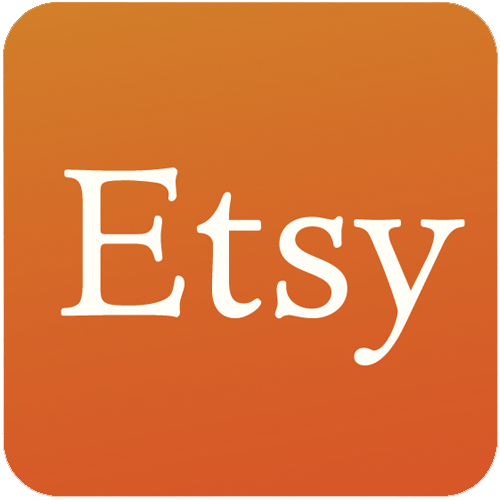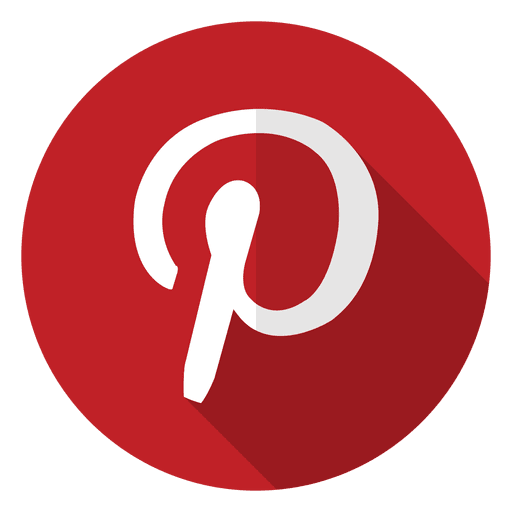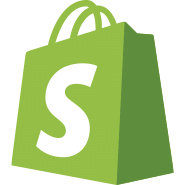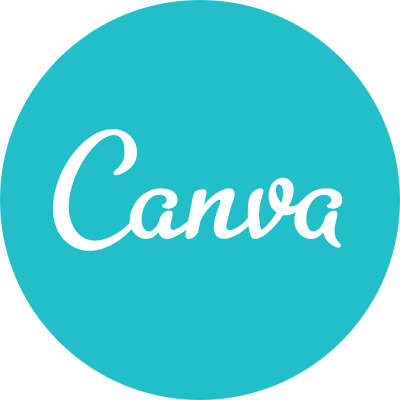How I Used My Budgeting Skills To Pay Off $30K Student Debt And Build A $10K/Month Business
Hello! Who are you and what business did you start?🔗
My name is Emily McDermott and I’m the founder of Pretty Arrow, a personal finance brand that helps young women pay off their debt and make a budget.
I design fun budgeting templates in Google Sheets and Excel to make budgeting fun, fast, and easy to stick to (always with my target audience in mind- this is crucial). When I started building this brand, my goal was to make something that I was personally excited to use every day.
After combining this with keyword research on Etsy, sales picked up fast. I was able to far surpass my income at my full-time job.
Since I sold that first spreadsheet in 2021, I’ve now sold over 29,000 of them!
My best tip for retaining your customers in a digital products business is to grow your email list and send truly valuable emails that help your customers.

What's your backstory and how did you come up with the idea?🔗
A few months before I started my business, I quit my full-time job to focus on my mental health and recover from burnout. I wanted to start my own business online; it was my dream to be an entrepreneur before I turned 30. At the time, I thought I would just start a blog.
I was very passionate about the benefits of budgeting and was always helping my friends make their budgets, so it felt natural to start a personal finance blog. I’d used budgeting to pay off over $30,000 in student loan debt, so I figured I had lots of content to write about.
However, after writing a few posts, I realized I wanted a way to monetize my blog faster- while I tried to learn the ins and outs of Google SEO and getting traffic to it. After a couple of Google searches for digital products in the budgeting niche, I found Etsy.
There were other sellers selling budgeting templates, and they appeared to be making regular sales. I immediately thought this would be a great way to get some extra traffic directed to my blog, too! Win-win!
At first, I listed a printable with over 50 budgeting pages for sale (I designed this in Canva). I made a few sales here and there.
I wanted to take it up a notch, so I started to research Etsy's sales strategy. This is when I discovered keyword research and the importance of targeting long-tail keywords (search terms that are in demand, yet also have low competition from other sellers).
I signed up for eRank, an Etsy keyword tool. I almost immediately saw that budget spreadsheets were in high demand…yet the competition was considerably lower than it was for printables.
This also made perfect sense to me since using a spreadsheet was way faster and more customizable than a printable PDF. So even though I was not a spreadsheet expert at all, I had fun with it and started designing something that was targeted specifically to women (unlike the competition around me at the time).
There were quite a few nights spent watching YouTube tutorials on Google Sheets, but within a couple of weeks, I had my first spreadsheet made.
When I started selling spreadsheets, I was not a spreadsheet expert. At most, I had a beginner’s knowledge of Excel from one university course.
Take us through the process of building the first version of your product.🔗
When I designed my first spreadsheet, I knew I wanted it to have the basic layout that all budget templates had (a walkthrough of income, bills, expenses, savings, and debt). But I wanted to make my product stand out in 2 ways: make it interactive and time-saving (unlike printables) and make it targeted specifically to women (unlike the competition at the time on Etsy).
Instead of enrolling in advanced Excel classes and trying to make something complex, I only learned how to make graphs and a handful of formulas. I knew I wouldn’t want something complicated, so I made something very streamlined and user-friendly for my customers.
I put most of my focus into branding my products and making them feel less like a spreadsheet. I wanted them to speak to my target audience directly and get them excited to transform their lives. Even to this day, everything I do is about branding and creating an emotional experience/transformation for my customers.
Describe the process of launching the business.🔗
When I listed my first spreadsheet (a monthly budget template in Google Sheets), I remember getting my first sale on the first day. And after that, the sales kept coming in!
By combining keyword research with a really strong idea of who my target audience was, I was increasing my conversion rate- and my sales- quicker.
One of my biggest lessons learned from this launch was that when something works (when your conversion rate is at least 2% for a digital product), make more of it! People will tell you what they want from you with their purchasing behavior. So I continued to grow my sales by making more budget spreadsheets that were long-tail keywords (with the same overall design scheme).
I also started viewing Etsy as a traffic source to build my email list. I use a free budget resource library to get signups to my email list on Convertkit. I have had great success in offering people a specific transformation (starting a budget, for example!) with a freebie. It also helps that it is both a generous offering for $0 AND piques their curiosity as to what’s inside.
Since launch, what has worked to attract and retain customers?🔗
On Etsy, no doubt investing in an affordable keyword research tool like eRank will help you make that first sale faster. The second thing that works is creating higher-priced bundles of related products. This bundle should offer them a discount compared to buying the products individually. Then, when someone buys a product- you can include a link to this awesome bundle in their download package.
It is also imperative to market your free lead magnet like crazy on Etsy! In your shop banner, in your listing images, and your product descriptions. I also include this in my spreadsheets themselves sometimes. To retain those customers who are making a one-time purchase from you on Etsy, you will need to direct them to your email list. Then you can market your products (and services) to them in the future.
I have had great success with listing my products on a Shopify store and running Facebook ads for them. This is one thing that I wish I would have started on day one. I always wanted to scale my business outside of Etsy, but I thought I needed a massive email list of customers to start a Shopify store.
Now I’m telling you- Facebook ads are a great way to get more customers into your business and retain them on your email list.
I run ads to my free lead magnet. I know this seems silly- why would you pay for someone to sign up for your freebie?- but it’s been a low-cost way to build an engaged list of my exact target audience. This is yet another reason why you should nail down your target audience now!
You will know exactly who to run ads to. I also have it set up on Convertkit that when someone clicks on my ad and then signs up for my email list, they will be directed to a page on my website that offers them a one-time deal on a bundle of budget spreadsheets (which I sell for $17-$27). This alone gets me a 2-3x ROI on ads.
My best tip for retaining your customers in a digital products business is to grow your email list and send truly valuable emails that help your customers. This will always serve you better than just emailing them about your products and telling them to buy.
More often than not, people will want to buy a digital product when it is offering them an exciting transformation in their lives! The transformation is what they are buying from you- as cheesy as that might sound.
As an example, I will send 3-5 value-packed emails before sending a promotional email about a new or existing product (if existing, I like to offer a limited-time discount to encourage a buying decision). Just make sure that the product you promote ties into the previous value-based emails you sent.
How are you doing today and what does the future look like?🔗
2.5 years after starting my business, we are now a small but mighty team of two (my sister, Lena, is my operations manager)! Our focus is on making products that our customers will go crazy for and marketing these products on multiple channels (Etsy, Facebook ads, and Instagram ads).
Nowadays, I’m all about spending less time creating new spreadsheets and more time marketing the ones that have great conversion rates (again, 2% or higher is the industry standard. Hint: you can track this metric on Etsy! Then you can list the same product- that’s proven to convert- on Shopify and run Facebook ads to it).
We would also like to focus on adding more Google SEO-optimized blog posts to our blog as a way to boost traffic without paying for more ads.
Through starting the business, have you learned anything particularly helpful or advantageous?🔗
Experiment, experiment, experiment! If you’re not sure which colors or designs will translate to sales for your target audience, try selling a few different variations of it to test which one has the highest conversion rate. This is the only way to know for sure what works- you must ask customers for their feedback by seeing what they purchase.
One big mistake I made, in the beginning, was thinking I needed to make a lot of spreadsheets to make a full-time income. What is most important is making the products that you know your target audience will need (put yourself in their shoes and map out a handful of steps they will want to take to make their desired transformation).
When you know what they’re looking for, you can make products that solve these problems for them- and make repeat sales.
What platform/tools do you use for your business?🔗
My favorite tools for my business are eRank and Convertkit.
eRank is a necessity because it helps me make decisions on what products to make without second-guessing myself. I can validate if the demand exists for this product, and if the competition is low. It is also very affordable and easy to use (I only use the keyword tool)
Convertkit is truly the backbone of my business- it’s how I build a list of interested customers and continue to market my products to them (and therefore, make repeat sales). I have been using it since day one and I find it very easy to use!
What have been the most influential books, podcasts, or other resources?🔗
My all-time favorite business book is Building a Story Brand by David Miller. It helped me to cut through the noise about marketing and build an online brand that helped me make sales. I highly recommend that anyone read this before they start their first digital products shop, so they can get clarity on how to build a long-lasting brand at the same time.
Advice for other entrepreneurs who want to get started or are just starting out?🔗
If you’re starting an Etsy shop and you’re not sure who your target audience is, customers will pick up on that. And they won’t be sure if you’re the right shop for them to buy from. Make your products an absolute no-brainer purchase for one group of people out there… you can’t target everyone at the same time effectively!
When I started selling spreadsheets, I was not a spreadsheet expert. At most, I had a beginner’s knowledge of Excel from one university course. But I was able to turn spreadsheets into a consistent full-time income for 2.5 years and counting. I truly believe this is because this is where my passion was (making fun and interactive dashboards about budgeting, something that helped me pay off my student loans).
If you’re not sure where to start, think of your passion and imagine making a product related to it: does it excite you? If it does, I bet you’d be surprised by what you can achieve.
Where can we go to learn more?🔗
If you have any questions or comments, drop a comment below!

Download the report and join our email newsletter packed with business ideas and money-making opportunities, backed by real-life case studies.

Download the report and join our email newsletter packed with business ideas and money-making opportunities, backed by real-life case studies.

Download the report and join our email newsletter packed with business ideas and money-making opportunities, backed by real-life case studies.

Download the report and join our email newsletter packed with business ideas and money-making opportunities, backed by real-life case studies.

Download the report and join our email newsletter packed with business ideas and money-making opportunities, backed by real-life case studies.

Download the report and join our email newsletter packed with business ideas and money-making opportunities, backed by real-life case studies.

Download the report and join our email newsletter packed with business ideas and money-making opportunities, backed by real-life case studies.

Download the report and join our email newsletter packed with business ideas and money-making opportunities, backed by real-life case studies.



























